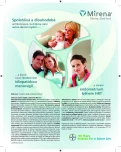Rapid detection of the most common chromosomal aneuploidies in the second-trimester amniotic fluid using QF-PCR
Authors:
I. Švecová 1*; T. Burjanivová 2*; J. Kršiaková 3; Z. Lasabová 2; K. Biringer 1; I. Kapustová 1; P. Móricová 1; J. Danko 1
Authors‘ workplace:
Autori prispeli k práci rovnakým podielom
*; Gynekologicko-pôrodnícka klinika JLF UK a UNM, Martin, prednosta prof. MUDr. J. Danko, CSc.
1; Ústav molekulovej biológie JLF UK a UNM, Martin-Vrútky, prednostka doc. RNDr. Z. Lasabová, PhD.
2; Oddelenie lekárskej genetiky UNM, Martin, primárka MUDr. J. Kršiaková
3
Published in:
Ceska Gynekol 2013; 78(4): 373-378
Overview
Objective:
To introduce QF-PCR method for detection of the most common chromosomal (trisomy 21, 18 and 13) and gonosomal aneuploidies at our department in the second–trimester amniotic fluid. To test the hypothesis of chromosomal aneuploidies detection using STR markers of Aneufast® kit via analysing free fetal DNA (ffDNA) isolated from plasma of pregnant women with confirmed trisomy 21 in fetus.
Design:
A prospective clinical study.
Setting:
Department of Obstetrics and Gynecology, Jessenius Faculty of Medicine and University Hospital in Martin, Slovak Republic.
Methods:
The samples of amniotic fluid were obtained from 67 women (twin pregnancy in 3 cases) in the 2nd trimester (15th to 22nd gestational week (g.w.)). Samples were examined using multiplex QF-PCR via Aneufast kit. In the case of positivity for trisomy 21, they were re-examined using Devyser Resolution 21 kit. All samples were parallelly evaluated by cytogenetic karyotyping. We also analyzed ffDNA from the plasma of 3 high-risk women using Aneufast kit. The plasma samples were obtained in the 2nd trimester(17th to 21st g.w.). Qiaamp DSP Virus kit was used for ffDNA isolation. Trisomy 21 of 3 fetuses was confirmed by karyotyping after 2nd trimester amniocentesis.
Results:
In the cohort of 70 samples, 7 pathological results (six trisomies 21 and one trisomy 18) were obtained. There was 100% concordance with cytogenetic karyotype in all samples examined by QF-PCR. The amplification of tracked chromosome 21 fragments was not evaluable in the case of ffDNA analysis.
Conclusion:
QF-PCR was approved as reliable, rapid, quite simple and financially bearable method of prenatal diagnostics. Despite the fact of good availability and work implementation of Aneufast® kit, results of ffDNA analysis are insufficient. We did not obtain interpretable results after ffDNA analysis from maternal plasma in trisomy 21 fetuses.
Keywords:
aneuploidies – QF-PCR – prenatal diagnosis – STR – ffDNA
Sources
1. Dudarewicz, L., Holzgreve, W., Jeziorowska, A., et al. Molecular methods for rapid detection of aneuploidy. J Appl Genet, 2005, 46, p. 207–215.
2. Garfa, WE., Osama, MA., Tamer, FT., et al. Non invasive prenatal screening of fetal aneuploidies by quantitative fluorescence PCR: evaluation of the in-vitro diagnostic test kit ‘Aneufast’ for plasma cell-free fetal DNA. Med Res J, 2011, 10(2), p. 49–52.
3. Hudecová, I., Haško, M., Švecová, I., et al. Detection of fetal Y-specific DNA markers in maternal plasma. Folia Medica Cassoviensia, 2011, 66(1), p. 76.
4. Lasabová, Z., Švecová, I., Hudecová, I., et al. Our experience with the prediction of fetal RhD in maternal plasma of D negative women from the region of Northern Slovakia. Biomed Pap Med Fac Univ Palacky, 2012, 156(2), p. 5111.
5. Lo, YMD., Lun, FMF., Chan, KCA., et al. Digital PCR for the molecular detection of fetal chromosomal aneuploidy. Proc Natl Acad Sci USA, 2007, 104, p. 13116–13121.
6. Lo, YMD., Tsui, NB., Chiu, RW., et al. Plasma placental RNA allelic ratio permits non invasive prenatal chromosomal aneuploidy detection. Nat Med, 2007, 13, p. 218–223.
7. Švecová, I., Haško, M., Mendelová, A., et al. Association of free fetal DNA levels with hypertensive disorders in pregnancy – preliminary results. Int J Gynecol Obstet, 2012, 119(3), p. 784.
8. Tsui, DW., Lam, YM., Lee, WS., et al. Systematic identification of placental epigenetic signatures for the noninvasive prenatal detection of Edwards syndrome. Plo Sone, 2010, 5, p. 15069.
9. Vrbická, D., Vodička, R., Vrtěl, R., et al. Rychlá detekce nejčastejších chromozomálních aneuploídií metodou multiplex QF-PCR v prvním trimestru gravidity. Čes Gynek, 2006, 71(4), s. 280–284.
Labels
Paediatric gynaecology Gynaecology and obstetrics Reproduction medicineArticle was published in
Czech Gynaecology

2013 Issue 4
Most read in this issue
- Vulvar melanoma
- Laparoscopic treatment of borderline ovarian tumorsin fertile women
- Nocturnal polyuria, treatment with desmopressin
- Peripartal life-threating haemorrhage – intensive care and haematological treatment
